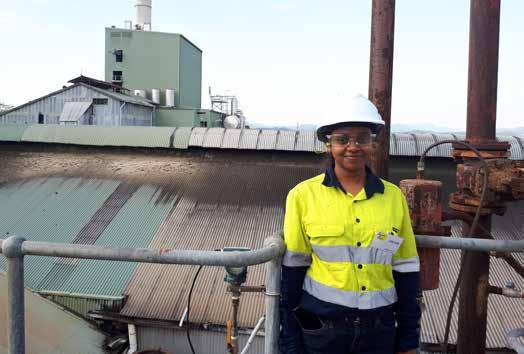
2 minute read
POSITIVE STEP FORWARD IN CONTROLLING SUCROSE DEGRADATION
Degradation of sucrose during its manufacture directly reduces sugar yield and the sugar sales revenue. Where acidic compounds are produced, it can also cause corrosion in the factory, running up maintenance costs.
As part of an investigation of juice degradation in sugar manufacturing processes (Cane Matters , Autumn, 2022 p. 32), SRA funded a PhD student, Chalani Marasinghege, who worked with Chief Investigator QUT’s Dr Darryn Rackemann on the project.
Advertisement
Chalani was able to complete additional work on the problem as part of her thesis, using juice samples collected from Rocky Point/Condong Mills in the 2022 season which were tested at QUT.
The problem she tackled was the loss of sucrose during raw sugar manufacturing, which happens when the juice degrades during evaporation and the release of various impurities.
“The rate at which sucrose degrades speeds up when the pH of sugar juice decreases. The juice's capacity to maintain pH, which is influenced by the concentration of organic acids, plays a significant role in this variation,” Chalani said.
Degradation of sucrose directly reduces sugar yield and therefore the sugar sales revenue. Where acidic compounds are produced in the process it can also cause corrosion in the factory, running up maintenance costs.
Millers add a small amount of alkaline agent (i.e. lime) to sugarcane juice in the factory to increase the pH level in order to reduce sucrose degradation during processing. The lime also reacts with phosphates in the juice to improve juice clarity. It leaves the factory in the mud from the clarifier.
“However, degradation also occurs exponentially with temperature rise and the length of time the juice sits in the evaporators. This is largely dictated by current milling equipment and cannot be improved on,” Chalani said.
Nevertheless, Chalani found out that not only pH but also juice composition can be controlled to a certain extent to minimise sugar degradation.
“Natural impurities in sugarcane juice include invert sugars. This is a mixture of glucose and fructose which occurs naturally in the sugarcane as well as due to microbial degradation and low pH during harvesting and transport to the factory, and processing within the factory,” she said.
“Others are flavonoids, minerals, organic acids, proteins, amino acids, phenolics, polysaccharides and bagacillo, a minute portion of bagasse.”
An experimental test program looked at the impacts of various impurities individually and in combinations using synthetic juice solutions compared with factory evaporator supply juice (ESJ) which is the clear or clarified juice produced in the mill.
Chemicals were spiked into the factory solutions at concentrations five times their normal amount to find out how sucrose degraded under static thermal conditions, in an oven set at more than 120 degrees Centigrade for 75 minutes.
“Invert sugars, flavonoids and minerals were found to increase sucrose degradation and caused a higher juice pH drop,” Chalani said.
“Organic acids helped minimise sucrose degradation due to their natural pH buffering capacity.
“Other juice constituents showed minimal impact.”
The research work found that by changing the liming agent used in the mill from lime to soda ash, dolomite or caustic soda, sucrose losses could be measurably reduced.
“However, because juice constituents are involved in such complex interactions with each other, further research is necessary to provide other solutions,” Chalani said.
Chalani Marasinghege’s findings were presented at the International Society of Sugarcane Technologists Congress and a summary was provided at this year’s SRA/ QUT Regional Milling Research Seminars.








